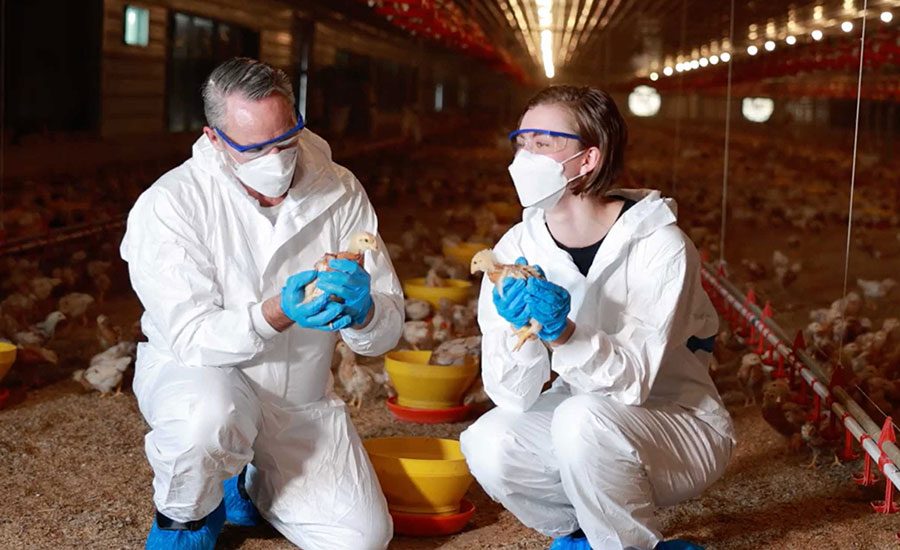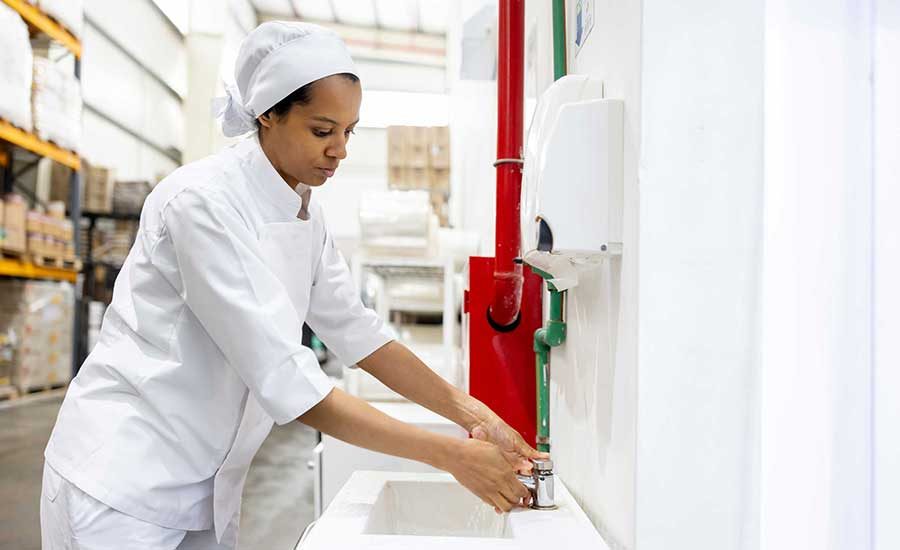Processors today are looking for the most hygienic ways to deliver their products to customers. Effective and efficient sanitation of production equipment is at the heart of this goal, and having the right cleaning process and parameters is critical to achieving good sanitation results. A conveyor belting supplier should possess an experienced, industry-specific team, a line of hygienic belts designed for different applications and the expertise to recommend the right belt for each application.
Although Intralox has more than 35 years of experience producing hygienic, food-grade conveyor belts, it established its FoodSafe Team in order to further research and develop the most time-efficient and cost-effective means of ensuring hygienic conveyance. Gary Larsen and Roger Scheffler are the company’s full-time food safety consultants, dedicated exclusively to hygiene and sanitation of conveying systems. Larsen is a published food safety consultant who has worked with major U.S. meat companies and global food producers for over 20 years in the areas of food safety and quality assurance. For the past 10 years, Larsen has been involved in the development and launch of Intralox’s most significant sanitary conveyance offerings, including SeamFree™ belting, EZ Clean Angled Sprockets and Clean In Place System, and most recently, ThermoDrive® belting.
With a background in design engineering, Roger Scheffler has a thorough knowledge of the machinery and equipment used throughout food processing plants. For the past 12 years, Scheffler has focused on protein processing plants for the company in Europe. He has field-tested experience in food safety practices throughout this area. Since 2008, Scheffler has narrowed his focus to assist customers in their efforts to increase sanitation efficiency and meet food safety regulations.
The FoodSafe Team is intimately familiar with each application and has the tools to ensure that any belt technology recommended is exactly what is needed. Through close ties with industry agencies such as the U.S. Department of Agriculture and NSF, they stay on top of the latest food safety regulations and news. They regularly attend industry conferences and continually test company products in both the lab and the field to discover the most effective cleaning practices.
The Intralox FoodSafe Audit
Larsen and Scheffler visit plants across the globe in order to perform Intralox FoodSafe Audits. Through the audit, they are able to identify a plant’s critical sanitation needs and provide information to help optimize its conveyance and attain its food safety and sanitation goals. The FoodSafe Audits give processors a plan of action for addressing issues, such as hygienic conveyor and belt design attributes, reducing risk of cross contamination, sequencing sanitation steps and equipping a sanitation crew with the most effective sanitation methods. The results of the audit are often presented in a workshop format in order to train a plant’s cleaning crew so that they may become better versed in conveyor and belt sanitation.
In order to help customers prioritize, all recommendations are listed in terms of their urgency as related to each specific plant’s initiatives, cost versus benefit and return on investment. “We know that every plant is limited in resources, so we break our recommendations down by those that are most necessary for achieving or maintaining hygienic conveyance,” explains Larsen. “Often the fix is something simple. For example, the wrong water temperature can have a detrimental effect on your sanitation results. If the water is too cold, you cannot adequately clean the belt. If the water is too hot, it can cook the food proteins onto the belt. Simply making a small fix like that can yield huge results.”
Food Safety Research
Senior Food Safety Scientist, Dr. Zhinong Yan, is the latest addition to the FoodSafe Team. Dr. Yan has been involved in food microbiology and food safety for over 20 years, and his focus area is the study of the prevalence, survival, cross contamination, and control of food-borne pathogens including Listeria monocytogenes, Salmonella, Escherichia coli and Campylobacter in the ready-to-eat food, meat, poultry and fresh produce industries. In particular, Dr. Yan is highly experienced in microbial analysis of food processing equipment, such as conveyor belts and slicers, and processing environments. He has worked extensively in the development of various pathogen reduction strategies including sanitizers, X-ray and chlorine dioxide. His current research and testing for the FoodSafe Team focus on assessing the microbial risk of alternative belting options compared to Intralox’s ThermoDrive belting.
One thing that is stressed repeatedly by all three members of the FoodSafe Team is that having the right belts in place is essential to delivering optimal results. Scheffler says, “If you can select a conveyor belt that was designed specifically for a particular application, you’ve exponentially lessened the sanitation efforts you’ll need to employ later on. Instead of reactively making improvements when a risk is identified, you’ve proactively ensured that the belt you’ve installed is going to act as a deterrent to contamination.”
intralox.com
The Role of Expertise in Ensuring Food Safety

Looking for a reprint of this article?
From high-res PDFs to custom plaques, order your copy today!





